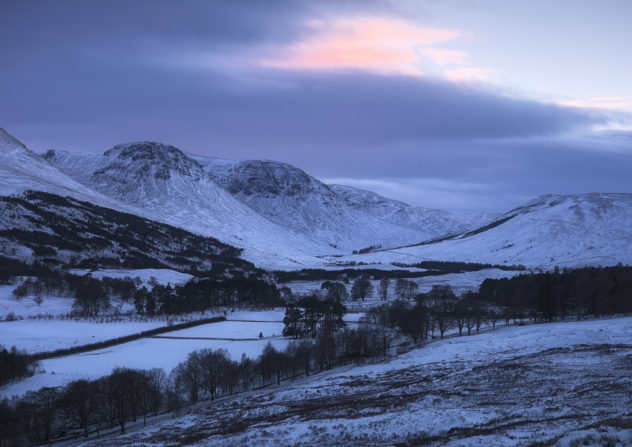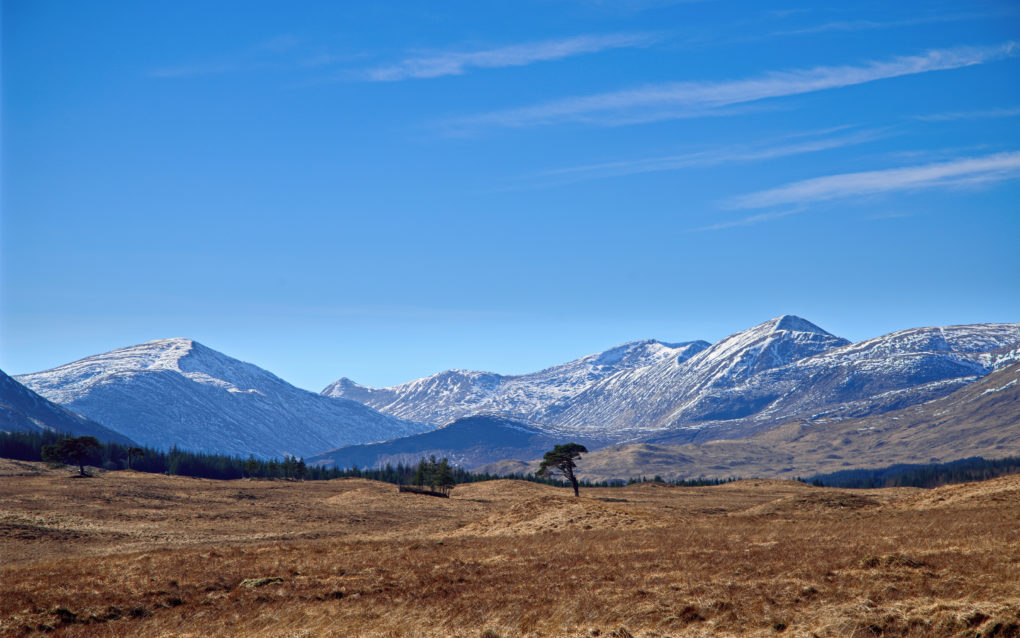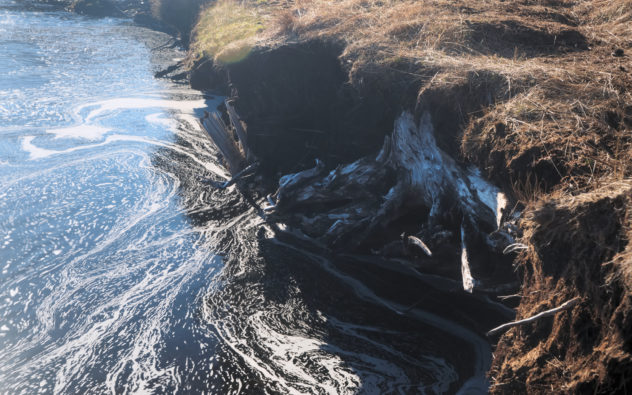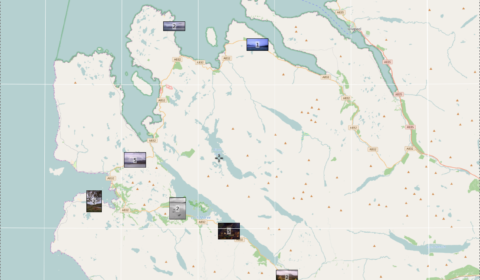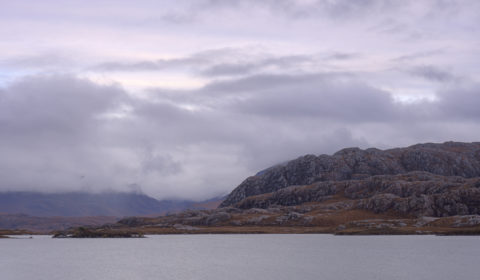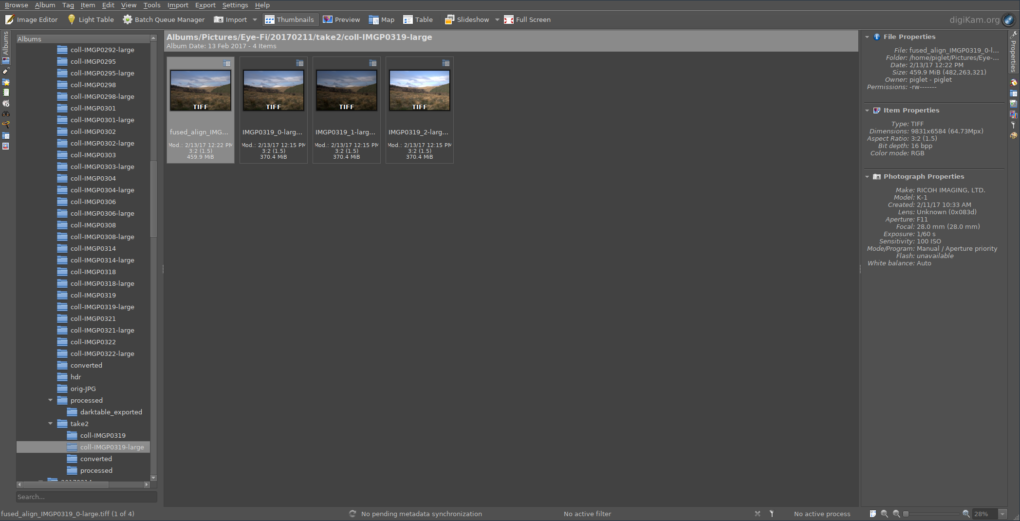Just a few photos of the landscape of Strathearn to the north of Auchterarder – testing a new ultra-wide lens during the evening’s dog-walk.
Tag Archives: hdr
Birnam Hill: Hunting the Highland Boundary Fault
I’ve been to Birnam Hill and Duncan’s Hill area at least six times, so it made a good testing ground for the new Pentax K-1 camera.
It wasn’t the best of days for landscape photography – a bit early in the day for what little light there was to be really photogenic – but there was a moment when the sun broke through and illuminated some birch trees on top of Duncan’s Hill most beautifully:
For some years I’ve known the Highland Boundary Fault crosses the A9 around Dunkeld/Birnam area, but never really pinpointed the exact location.
On my first visit I walked around Duncan’s Hill through Birnam Wood and Rochanroy Wood: I observed a particular lump of rock exhibiting clear strata sticking out of the hillside:
As I passed the edge of the established woodland, there was a pronounced drop of about a metre to the level of the new conifer trees to the right. And I wondered if this was a particular noted geological formation.

Three paths: this one leads down the line of the Highland Boundary Fault
On more recent visits I geotagged the location and compared with the British Geological Survey’s maps to see the rock types change either side of the dip – till, changing to slate and grit and then to psammite and semipelite typical of the Highlands.
On further investigation with Google Earth, the photo on the corner of the dip is right on the line of the Highland Boundary Fault itself, running up from Rohallion Loch through the lodge, round north-east turning easterly across the A9 south of Birnam.
Got it! Clear confirmation. Right on the money, first time 🙂
The path continues across a pronounced dip in the landscape before continuing up the other side to Stair Bridge Viewpoint and the King’s Seat on Birnam Hill.
Of course my favourite clear pure waterfall was still running:
The path affords some excellent views back of the Highland Boundary Fault cutting across the landscape:
And finally, as far up the hills as I wanted to go that day, at Stair Bridge Viewpoint I was rewarded with a clear landscape vista over Rohallion Lodge to the Lowlands to the south:
Glen Lyon
In the middle of January, I went for a drive around Glen Lyon. There was enough snow lying that the road was slippy on corners, so I didn’t get anywhere near as far in as I would have liked, but still, the light was a special kind of low cool glow.

Just a few twists along the road into Glen Lyon from Fortingall – we’re going that way into the glowing light, folks.
This is a pretty commonly shot view from a small layby – but beautiful in the cold winter light, showing the shapes of craggy mountains:
And that was as far as I dared go for the snow. Turning back, I stopped by the roadside to check out a particularly photogenic little lochan lurking on the edge of the forestry:
And I just had to take a photo of the beloved Doglet while I was there 😉
By the side of the river, dusk was long gone and the blue hour had well and truly set in.
Landscape, Photography and Land Management
This is going to be a long post, drawing on several disparate areas of experience and interest. Welcome to my mind…
Photographic Influence
The Highlands are not like 18th-century Venice. On driving around – which you can do around here – the landscape is raw, rugged, elemental, positively harsh on a cold day. We do not sit around in powdered wigs playing the harpsichord of an evening.
It is my opinion that landscape photography exists not to make merely aesthetically pleasant images, not even to convey a “feeling” from the photographer’s mind in the name of art, but rather to show and tell forth something of the landscape.
It is all too easy to go for a stroll, to get out into “nature” seeking photographs, to see only the shapes and forms of the land, hopefully cover it in contrasty dappled light; but if that is all that is seen in a photograph then it is the most absurd way to trivialize larger forces at work.
Worse still, it’s even easier to get into a mentality of visiting only known-good photo locations. “Saturday afternoon, Falls of Bruar” – nothing against the Falls, far from it, but it becomes a photographic rut devoid of sense of exploration.
I used to have a motto: “no landscape photos without saying something about the rocks you stand on”. It’s still a good thought, but even though the geology might date back 3.5 billion years, that is only one aspect of pertinent story, perhaps even the cheap and comforting option – looking straight to Old, bypassing the anthropocene; it reduces taking a principled stand to throwing out bland “statement”s or little stories and/or personal feelings, offensive in their inoffensiveness.
The PSNS Experience
A couple of months ago I attended a lecture at the Perthshire Society of Natural Science (PSNS), part of the “Curious Minds” series; the presenter worked for SEPA at Stirling University, and he spoke about Sustainability. Being brutally honest, it was not the most approachable of talks: a business person speaking from a mind of systems-thinking about corporate matters, with that peculiar management tendency to present a metaphorical briefcase of ideas supposed to be complete but leaving one wondering what nuance is missing – that’s not likely to engage the common individual who only wants to know how best to run their own house. I couldn’t help thinking of the only two occasions I’ve had any dealings with SEPA – first to ask how to dispose of film-processing chemicals and second for maps to avoid flood areas when buying a house; if SEPA are to offer the public a service, they have a PR hurdle to overcome…
However, I came away with the seeds of several thoughts that have since germinated.
The lecturer explained how SEPA sees companies on a spectrum from “climate criminals” (knowingly damaging the environment) through careless to compliant to champions. A lot of words containing “C” and “A” and a nice gradation from red to green, but that illustrates the systems-think.
More usefully, SEPA has expanded their remit so they now see Scotland from three points of view: there’s the environment which they still protect for its own sake; there’s social (concerning wellbeing when people go for a walk in the forests); and there’s an economic aspect.
Experiences of Farming
For lack of reason to the contrary, I’ve always kept an open mind opinion about livestock farming. As a confirmed carnivore, living somewhere between town and country, it’s not easy to see bucolic bliss as harm. However, in the past five years there have been three experiences that sounded warning bells.
First: in Galloway, I spent 7 months living in a run-down farmhouse in the middle of a livestock farm on a nondescript C road. If we left the gate open, sheep would come and mow the lawn and cows walk past the study window and fertilize said lawn on their travels. It’s all very well feeling close to “nature” when the sun shines, but when it rains and the slurry runs 4 inches deep corroding your boots whilst walking the dog, it is far from pleasant. It also “never snows in Galloway”, which doesn’t explain the 3′-deep snow that winter, requiring the farmer’s assistance to dig out the surrounding roads – which were made impassable by his own tractors bouncing along compacting the snow into undulating waves of ice in the first place.
Second: also in Galloway, when I spent 15 months living next to a different farm: there was a beautiful line of old beech and hawthorn trees running up a small hill, just round the corner from where we lived; the farmer chopped them all down to make way for root crops to feed his sheep.
Third: two years ago, I went for a walk along a glen and found a particularly pleasant viewpoint, a U-shaped glacial valley with corrie lochan and lonely pine tree in the basin.
Seeking to revisit and explore further, I researched the area on Google Earth and figured, with a choice of two, the better track would be one running up the south/”left” side of the glen to reach further into the mountains. So a month ago I set forth, with young dog on a lead beside me, to explore.
About 300 yards from the carpark, we rounded a corner and saw a herd of Highland cows and calves. By chance, the farmer came by in his Landrover at exactly the same moment and said not to take my dog any further. Fair enough – answered my dithering wonderings on the matter pretty quickly – and the exchange was pleasant enough.
However, that does not explain why, having driven off ahead of me, he promptly shut and padlocked a 6-foot-tall gate across the path, leaving me and my dog on the wrong side with the cows.
With no way through or around the gate, I had to persuade my dog to climb precariously over that ladder, knowing that if one paw slipped he could be seriously injured.
As for outdoor access code – “right to roam” – it would have been more considerate if they had erected some sign warning of impaired access nearer the carpark…
With three strikes against livestock-farming kind, it’s time to start formulating an opinion.
Connected Thinking
So after a bit of a delay we rejoin the walk along the glen, this time going down the right side of the river instead.
Realisation dawned.
The first realisation was that the view I had seen a couple of years previously relied on a trick of perspective – the grassland appears continuous over distance while actually the river lurks below the level.
As I reached the furthest point of my walk a few miles into the glen, turning back, I observed how the river had cut straight vertically down a metre or two, exposing dead tree roots in the bank.
Half-way back, I noticed dead trees all along the river bank, and just off to the side of the path I found a large expanse of land full of the bleached white remains of pine tree roots and it hit me that this was a peat bog – a genuine example of the kind of thing one reads about in “the Highlands”, as though that were some far-off place – well here we are, soil/mud/peat at our very feet.
And so I looked at it through SEPA’s eyes. Environment + Social + Economy <= Sustainability.
Following research, peat is deposited at a rate of about 1mm per year, so the 1.5-2m depth of peat beside the river corresponds to 1500-2000 years’ accumulation.
What we have here is not the wilderness beloved of landscape photographers, it is barren.
The interplay of light and shape and form of the landscape is utterly irrelevant while the natural pine trees that should be here lie dead in a large carbon sink, their place taken by monoculture fenced-off in enclosures for commercial gain. The parts of the glen that are not directly peat bog are bare through grazing of livestock whose methane and CO2 emissions are a major contributor to global warming. In the words of Henning Steinfeld, Chief of FAO’s Livestock Information and Policy Branch: “Livestock are one of the most significant contributors to today’s most serious environmental problems. Urgent action is required to remedy the situation“.
This is not wilderness, it is barren. It is not a wonder of nature, but artificial. It is not contributing to society’s welfare but its unsustainability harms the planet.
Sometimes, one has to remove the rose-tinted sunglasses and see how one glen encompasses in every aspect a microcosm of all kinds of problems. Just because it’s a sunny day does not make it a happy story.
What Next?
I’m still thinking about it. I’ve spent long enough wondering if certain environmental charities are “a bit hippy”, but the facts are irrefutable: that glen stands for the worst combination of (un)sustainability factors. Peat bog itself is a valuable ecosystem, but given the choice I would far rather have the pine trees back that belonged there in the first place. The idea of rewilding meets with favour. While I would not want to join or recommend any “-ism” (vegetarianism or veganism being defined in terms of negative ideologies), I am also in favour of taxing the supply of meat and other livestock products to better reflect the true costs, including environmental factors.
Landscape and Geology – an NC500 road-trip
Back last November I spent a very happy few days staying up North; the first day was spent in Glen Affric (sunrise, trees, water and light).
In the few years since I was last up there, there’s been a concerted push to market the road around the far north of Scotland as an “answer to Route 66” and thereby promote it as a tourist attraction.
The second day of my holiday saw lousy weather, completely overcast and foggy for much of the time. So I spent the day driving around Wester Ross wondering where the scenery had got to… trying not to think of it as the NC500 but actually enjoying several stops along the route that I’ve been to previously.
The first stop was the well-known view from a layby in Glen Dochart, above Kinlochewe to admire the sinuous road:

An obvious scene: the road wending through Glen Dochart toward Kinlochewe (not depicted: Kinlochewe, because of the mist).
Pity about the mist…
A little further along on the way through Kinlochewe are two mountains – Beinn Eighe to the left and Meallan Ghobhar and Coille na Dubh Chlaise to the right. We pulled off the A-road and Doglet had his breakfast more or less directly on the Loch Maree fault-line whilst admiring the quartzite rock strata.
There wasn’t much to be said for the views across Loch Maree, although the contrast of dull grey skies and warm autumnal orange and yellow colours was pleasant.
Some years ago, there was a TV documentary, a former politician’s search for the most natural woodland in the UK. After much searching around down south in the New Forest, he came north and explored Caledonian Forest remnants, finally finishing up on an island in Loch Maree – a rather bizarre arrangement of an island with a lochan with another island inside that – on which he stated the trees were least likely to have been touched by mankind. There is an obvious viewpoint, a small section of beach, at Slattadale toward the north-west end of Loch Maree, from which the group of islands can be seen.
Of all the photos I made during that day, this was perhaps the most classical landscape, in that I had the idea for these photos – the location, leading lines of foreground boulders, large expanse of silvery water and Slioch in the distance – planned in my mind for ages before revisiting the area.
What you don’t see is how, while I was making these photos (long exposures, totalling a minute’s exposure, focus-stacked) there was another photographer sitting 20yd away, cooking his morning breakfast – so the photos fail to include the clouds of fragrant bacon and fish smoke billowing past the camera…
Speaking of lunch, mine happened at Badachro, at the Inn. Highly recommended – everyone loved Doglet, which is a good start, and the burger was tasty as ever. Mostly the thing I like most is how the coastline is just like Plockton – west-coast rocky sea-lochs and seaweed – but without actually being Plockton that everyone else flocks to see.
And this is what it’s really like at Badachro:
[sphere 2974]
On a previous trip I had explored as far as Poolewe but not had a chance to go further; this time I stopped off at Loch Tollaidh to admire the rocky outcrops across the water (Lewisian Gneiss and other igneous rock).
Signs of industry: on the shore of Loch Tollaidh is a small jetty, presumably a put-in for boats to go inspect the small salmon farm. That and the remains of a very dead boat, wood bleached inland, caught my attention:
On travelling up the coast to Mellon Udrigle (what a wonderful name!) I was struck by the view across the Wester Ross Marine Protected Area to the mountains on the horizon on the mainland. On the left, a bit of misty cloud drapes over the top of Beinn Ghobhlach; to the right, there’s more mist flowing over Sail Mhor but the huge bulk of An Teallach was completely hidden behind the cloud.

A wide-angle panorama: low-lying cloud (with a bit of precipitation) and mist flowing over Sail Mhor – the full bulk of An Teallach is completely hidden in the cloud beyond.
The mountain on the far left is Beinn Ghobhlach.
By the time I got back onto main roads, with a very long drive ahead, the light was fading fast toward dusk and the blue hour and clouds in front were thick and closing in fast, so I made one final photo for the day by the side of Little Loch Broom and scarpered fast.
Winter along the Provost’s Walk
This is fast becoming one of my favourite walks around town – not least because it’s less muddy than the other track out the back. Yesterday I awoke to find the world had turned white, complete with snow-drift piled-up on the front lawn by a passing snowplough. Naturally, over-inflated reports of traffic confusion abounded, although by the time I had to drive anywhere in the evening, the roads were as clear as a bell.
Anyway. I like this path. The Ruthven Water makes a great spot for the Doglet to paddle. All very relaxing and shiny in the white snow.
This is what it’s like around here…
Provost’s Walk:
Arty photos:
All shots taken on the Pentax K-1 using my new hand-held HDR workflow.
Pentax K-1: an open-source photo-processing workflow
There is a trope that photography involves taking a single RAW image, hunching over the desktop poking sliders in Lightroom, and publishing one JPEG; if you want less noise you buy noise-reduction software; if you want larger images, you buy upscaling software. It’s not the way I work.
I prefer to make the most of the scene, capturing lots of real-world photons as a form of future-proofing. Hence I was pleased to be able to fulfil a print order last year that involved making a 34″-wide print from an image captured on an ancient Lumix GH2 many years ago. Accordingly, I’ve been blending multiple source images per output, simply varying one or two dimensions: simple stacking, stacking with sub-pixel super-resolution, HDR, panoramas and occasionally focus-stacking as the situation demands.
I do have a favoured approach, which is to compose the scene as closely as possible to the desired image, then shoot hand-held with HDR bracketing; this combines greater dynamic range, some noise-reduction and scope for super-resolution (upscaling).
I have also almost perfected a purely open-source workflow on Linux with scope for lots of automation – the only areas of manual intervention were setting the initial RAW conversion profile in RawTherapee and the collation of images into groups in order to run blending in batch.
After a while, inevitably, it was simply becoming too computationally intensive to be upscaling and blending images in post, so I bought an Olympus Pen-F with a view to using its high-resolution mode, pushing the sub-pixel realignment into hardware. That worked, and I could enjoy two custom setting presets (one for HDR and allowing walk-around shooting with upscaling, one for hi-res mode on a tripod), albeit with some limitations – no more than 8s base exposure (hence exposure times being quoted as “8x8s”), no smaller than f/8, no greater than ISO 1600. For landscape, this is not always ideal – what if 64s long exposure doesn’t give adequate cloud blur, or falls between one’s ND64 little- and ND1000 big-stopper filters? What if the focal length and subject distance require f/10 for DoF?
All that changed when I swapped all the Olympus gear for a Pentax K-1 a couple of weekends ago. Full-frame with beautiful tonality – smooth gradation and no noise. A quick test in the shop and I could enable both HDR and pixel-shift mode and save RAW files (.PEF or .DNG) and in the case of pixel-shift mode, was limited to 30s rather than 8s – no worse than regular manual mode before switching to bulb timing. And 36 megapixels for both single and multi-shot modes. Done deal.
One problem: I spent the first evening collecting data, er, taking photos at a well-known landscape scene, came home with a mixture of RAW files, some of which were 40-odd MB, some 130-odd MB; so obviously multiple frames’ data was being stored. However, using RawTherapee to open the images – either PEF or DNG – it didn’t seem like the exposures were as long as I expected from the JPEGs.
A lot of reviews of the K-1 concentrate on pixel-shift mode, saying how it has options to correct subject-motion or not, etc, and agonizing over how which commercial RAW-converter handles the motion. What they do not make clear is that the K-1 only performs any blend when outputting JPEGs, which is also used as the preview image embedded in the RAW file; the DNG or PEF files are simply concatenations of sub-frames with no processing applied in-camera.
On a simple test using pixel-shift mode with the camera pointing at the floor for the first two frames and to the ceiling for the latter two, it quickly becomes apparent that RawTherapee is only reading the first frame within a PEF or DNG file and ignoring the rest.
Disaster? End of the world? I think not.
If you use dcraw to probe the source files, you see things like:
zsh, rhyolite 12:43AM 20170204/ % dcraw -i -v IMGP0020.PEF
Filename: IMGP0020.PEF
Timestamp: Sat Feb 4 12:32:52 2017
Camera: Pentax K-1
ISO speed: 100
Shutter: 30.0 sec
Aperture: f/7.1
Focal length: 31.0 mm
Embedded ICC profile: no
Number of raw images: 4
Thumb size: 7360 x 4912
Full size: 7392 x 4950
Image size: 7392 x 4950
Output size: 7392 x 4950
Raw colors: 3
Filter pattern: RG/GB
Daylight multipliers: 1.000000 1.000000 1.000000
Camera multipliers: 18368.000000 8192.000000 12512.000000 8192.000000
On further inspection, both PEF and DNG formats are capable of storing multiple sub-frames.
After a bit of investigation, I came up with an optimal set of parameters to dcraw with which to extract all four images with predictable filenames, making the most of the image quality available:
dcraw -w +M -H 0 -o /usr/share/argyllcms/ref/ProPhotoLin.icm -p "/usr/share/rawtherapee/iccprofiles/input/Pentax K200D.icc" -j -W -s all -6 -T -q 2 -4 "$filename"
Explanation:
- -w = use camera white-balance
- +M = use the embedded colour matrix if possible
- -H 0 = leave the highlights clipped, no rebuilding or blending
(if I want to handle highlights, I’ll shoot HDR at the scene) - -o = use ProPhotoRGB-linear output profile
- -p = use RawTherapee’s nearest input profile for the sensor (in this case, the K200D)
- -j = don’t stretch or rotate pixels
- -W = don’t automatically brighten the image
- -s all = output all sub-frames
- -6 = 16-bit output
- -T = TIFF instead of PPM
- -q 2 = use the PPG demosaicing algorithm
(I compared all 4 options and this gave the biggest JPEG = hardest to compress = most image data) - -4 = Lienar 16-bit
At this point, I could hook in to the workflow I was using previously, but instead of worrying how to regroup multiple RAWs into one output, the camera has done that already and all we need do is retain the base filename whilst blending.
After a few hours’ hacking, I came up with this little zsh shell function that completely automates the RAW conversion process:
pic.2.raw () {
for i in *.PEF *.DNG
do
echo "Converting $i"
base="$i:r"
dcraw -w +M -H 0 -o /usr/share/argyllcms/ref/ProPhotoLin.icm -p "/usr/share/rawtherapee/iccprofiles/input/Pentax K200D.icc" -j -W -s all -6 -T -q 2 -4 "$i"
mkdir -p converted
exiftool -overwrite_original_in_place -tagsfromfile "$i" ${base}.tiff
exiftool -overwrite_original_in_place -tagsfromfile "$i" ${base}_0.tiff
mv ${base}.tiff converted 2> /dev/null
mkdir -p coll-$base coll-$base-large
echo "Upscaling"
for f in ${base}_*.tiff
do
convert -scale "133%" -sharpen 1.25x0.75 $f coll-${base}-large/${f:r}-large.tiff
exiftool -overwrite_original_in_place -tagsfromfile "$i" coll-${base}-large/${f:r}-large.tiff
done
mv ${base}_*tiff coll-$base 2> /dev/null
done
echo "Blending each directory"
for i in coll-*
do
(cd $i && align_image_stack -a "temp_$i_" *.tif? && enfuse -o "fused_$i.tiff" temp_$base_*.tif \
-d 16 \
--saturation-weight=0.1 --entropy-weight=1 \
--contrast-weight=0.1 --exposure-weight=1)
done
echo "Preparing processed versions"
mkdir processed
(
cd processed && ln -s ../coll*/f*f . && ln -s ../converted/*f .
)
echo "All done"
}
Here’s how the results are organized:
- we start from a directory with source PEF and/or DNG RAW files in it
- for each RAW file found, we take the filename stem and call it $base
- each RAW is converted into two directories, coll-$base/ consisting of the TIFF files and fused_$base.tiff, the results of aligning and enfuse-ing
- for each coll-$base there is a corresponding coll-$base-large/ with all the TIFF images upscaled 1.33 (linear) times before align+enfusing
This gives the perfect blend of super-resolution and HDR when shooting hand-held
The sharpening coefficients given to ImageMagick’s convert(1) command have been chosen from a grid comparison; again the JPEG conversion is one of the largest showing greatest image detail. - In the case of RAW files only containing one frame, it is moved into converted/ instead for identification
- All the processed outptus (single and fused) are collated into a ./processed/ subdirectory
- EXIF data is explicitly maintained at all times.
The result is a directory of processed results with all the RAW conversion performed using consistent parameters (in particular, white-balance and exposure come entirely from the camera only) so, apart from correcting for lens aberrations, anything else is an artistic decision not a technical one. Point darktable at the processed/ directory and off you go.
All worries about how well “the camera” or “the RAW converter” handle motion in the subject in pixel-shift mode are irrelevant when you take explicit control over it yourself using enfuse.
Happy Conclusion: whether I’m shooting single frames in a social setting, or walking around doing hand-held HDR, or taking my time to use a tripod out in the landscape (each situation being a user preset on the camera), the same one command suffices to produce optimal RAW conversions.

The results of running darktable on all the processed TIFFs – custom profiles applied, some images converted to black+white, etc

One image was particularly outstanding so has been processed through LuminanceHDR and the Gimp as well
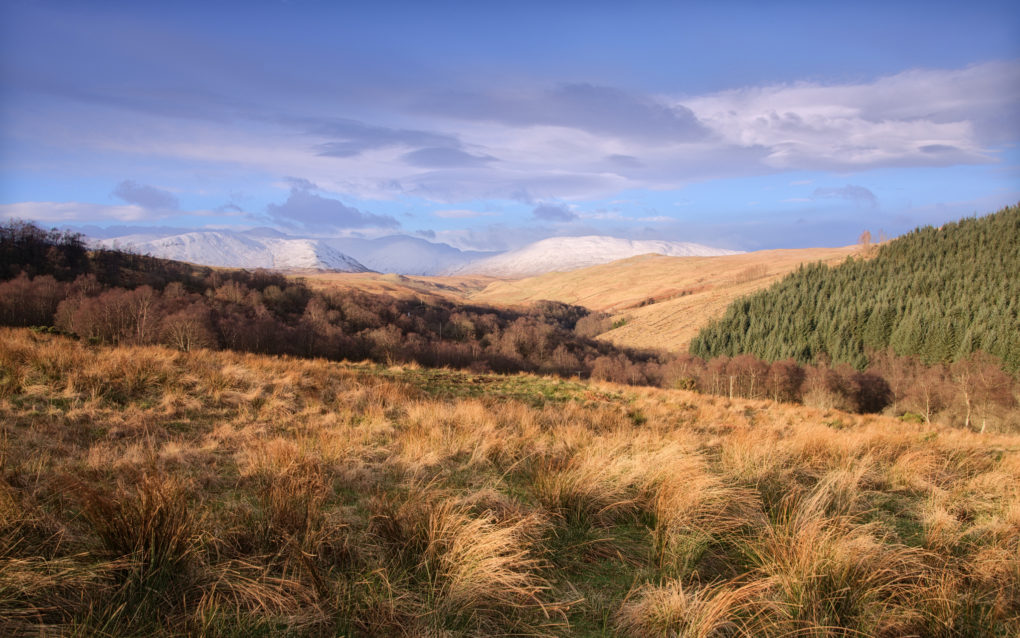
Meall Odhar from the Brackland Glen, Callander
Around the Black Mount
At the end of November I spent a happy Saturday afternoon driving out to the Black Mount area in Rannoch Moor, with photos in mind.
Didn’t help that I left the main camera battery at home in the charger, so was limited to the spare. Well, it makes one think when even turning the camera on to compose through the EVF uses finite battery life, especially in the cold. Lots of “pre-visualising” going on to keep the film-throwback photographer purists happy.
There were plenty of cars zooming along the A82 but a little stroll out into the bogs resulted in some nice landscape.
The crowning joy of the photographic excursion, however, was the total cliche scene of the Buachaille from the River Coupall. It’s sufficiently well-known that folks groan when it appears in photo-club competitions. The composition is more or less fixed, with varying extremity of weather conditions providing the value-additions to the photo.
This time, I spotted a little wisp of mist coming up Glencoe as I turned off down Glen Etive. There were only two other folks at the location; they said it was their second attempt that day as, on the way down the glen, there had been 20-30 folk milling around.
Funny how such an iconic landscape location still has people who will shoot it in suboptimal light.
We took a few photos, and dusk fell, with glorious shades of warm purple tints and an orange sky.
My temporary companions departed, leaving just me – well into post-sunset dusk blue-hour – at which point the wisp of mist rounded the base of the mountain underlining it in white to match the waterfalls in the river. And that is the shot of the day.
Wet Reflections
Just a couple of photos from a stroll beside a burn down the bottom end of town today at lunchtime – not great light, in fact it was beginning to rain. But if looking up doesn’t work, look down and take abstract photos of trees reflected in the burn instead…
November Sunset
November: season of dreich grey rainy wet horrible days, punctuated by sunsets like this.
Mill Glen, Tillicoultry
I hadn’t intended to go around the Mill Glen… but with a choice of three Hill-foot villages, I said Tillicoultry when it should’ve been Alva. Never mind. At least this Mill Glen has a tolerable view of distant refineries off the top.
Loch Lomond: At Inversnaid
There’s a couple of picturesque views to be had just below the hotel at Inversnaid harbour – the waterfall cascading down amongst the rocks one way, and opposite, a line of boulders leading toward the Arrochar Alps across Loch Lomond. Can’t complain.
I don’t often use the Pattanaik algorithm in LuminanceHDR, especially for colour results, but it seemed to work really well with the waterfall, nicely balancing low-key levels and saturation.
Loch Chon Reflections
I’ve had it in mind to visit Loch Chon in the Trossachs for a little while now, to see if I could find similar views to other photos of the area.
It didn’t disappoint – there were some wonderful reflections of colourful trees to be enjoying.
Around Here
A couple of views whilst out walking the dog – golden-hour sunlight on Ben Ledi and Ben Vorlich over by Callander, taken from Auchterarder.
Olympus Pen-F, 75-300mm lens, RawTherapee, 5-frame HDRs blended with enfuse and toned in darktable.
The colour photos are for sale on EyeEm: Ben Ledi and Ben Vorlich; sunset tree silhouette.
PhotoWalk 2016: Dubh Loch
There’s something distinctive about the light in Argyll, even at the early end of Autumn; the gold as it touches the mountains is exquisite.
As part of the photo-walk we strolled around part of Dubh Loch just outside Inverary; the light up the end of the loch was beautiful, the rainbows gorgeous, the water reflections perfect.
Couldn’t ask for a nicer afternoon, rain notwithstanding.






